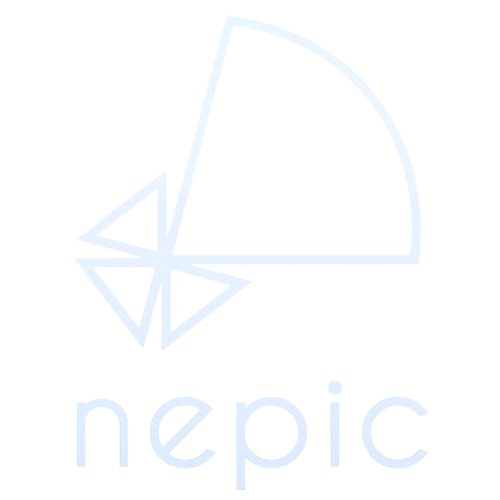
Implementing Bespoke Software for Industry
After more than 20 years developing software for some of the world’s most complex, high-risk industries, I’ve learned that no two operations are ever truly alike. In sectors like oil, gas, and chemicals, every plant, every asset, every process carries unique challenges—and with them, distinct software needs.
Off-the-shelf solutions are evolving rapidly, particularly with the integration of AI. Tasks we couldn’t have imagined automating five years ago are now being streamlined by increasingly sophisticated platforms. At IAMTech, we’ve seen this first-hand. Our own asset management solution, iPlanSTO, was built to be highly configurable—think of it like buying a suit off the rack, then having it tailored on Savile Row. It’s designed specifically for managing Shutdowns, Turnarounds, and Outages. Similarly, our iPermit system is a robust electronic Permit to Work (ePTW) solution.
While these products are highly effective at what they’re designed to do, they’re still purpose-built for defined processes. However, if your organisation faces a specific pain point—one tied to your industry, your location, your plant, or a unique operational requirement—even the most configurable off-the-shelf product can fall short of the precision, depth, and safety-critical functionality you need.
At IAMTech, I’ve had the privilege of leading the development of numerous bespoke software projects, designed to address those deeply technical, highly specialised needs. This guide isn’t theory—it’s a distillation of decades of practical experience; drawn from projects we’ve delivered for industry leaders like OilTanking and BP.
One common misconception is that developers only care about the backend—the code, the architecture. While I do spend plenty of time immersed in lines of code, writing it is rarely the most time-consuming or challenging part of the job. The real work begins long before a single line is written. From initial enquiry to final implementation, the journey is a strategic, collaborative process—one that blends technical expertise, deep domain knowledge, and a disciplined, structured methodology.
Below you will find my short, six-step guide to bespoke software implementation—from the perspective of a senior developer aimed at helping industrial leaders navigate the journey from discovery to deployment.
I hope you find it useful.
1. Discovery: Where the Real Work Begins
The journey begins with discovery: a phase dedicated to understanding not just the business requirements, but the scientific, operational, and environmental parameters that shape them.
I can tell you from experience—discovery isn’t just a project phase, it’s the difference between success and failure. You have to go deeper than gathering a list of requirements. You need to sit with the engineers, the safety officers, the planners—the people in the field who live these challenges every day.
When we built the iResponse platform for OilTanking, we didn’t just start coding a simulator. We worked hand in hand with scientists from Teesside University, translating complex models of thermal radiation, gas dispersion, and overpressure effects into practical, usable software. That research foundation was critical—not just for accuracy, but for credibility. The solution had to be as robust as the science underpinning it.
Together, we translated complex scientific models into a software interface that operational teams could use intuitively, without requiring a PhD to operate.
This level of discovery ensures that the final product is not only functional but also scientifically and operationally sound—essential when lives, assets, and reputations are at stake.
2. Design & Prototyping: Visualising Solutions Early
Design in bespoke software isn’t just about aesthetics—it’s about architecting systems that align with operational workflows, regulatory standards, and user expectations. Prototypes and wireframes help visualise the user experience and establish a common understanding across stakeholders.
Designing specifically for heavy industry is a world away from consumer apps. Interfaces must not only be intuitive but also functional in high-stakes, sometimes low-connectivity environments.
When IAMTech developed a bespoke incident management system for the UK Fire & Rescue Services, the design needed to account for extreme operational conditions: unreliable networks, multi-agency collaboration, and the need for immediate, accurate data capture. The resulting system incorporated offline functionality with auto-sync, real-time collaboration across devices, and a structured audit trail to support inquiries and investigations.
Every wireframe, every user flow was shaped by practical input from those on the ground, ensuring the software met them where they were, not the other way around.
By focusing design on real-world conditions, bespoke solutions ensure users can perform critical tasks even in high-pressure, resource-constrained environments.
3. Agile Development: Progress in Meaningful and Agile Sprints
You don’t deliver industrial software in one shot. Development is conducted through agile sprints—incremental, feedback-driven cycles that ensure continuous alignment with user needs. Each iteration brings the solution closer to being field-ready while maintaining flexibility to adjust as operational insights emerge, informed by stakeholder feedback.
Our experience with BP’s Jupiter platform—a global risk and insurance benchmarking system—demonstrates the value of this approach.
As BP’s requirements evolved from purely insurance risk assessments to include fire safety and other operational audits, the system was adapted to accommodate diverse audit types while maintaining data integrity and usability across BP’s vast and varied asset base
For me, the key to success has always been keeping users in the loop—show them progress, gather their insights, and use those to guide the next sprint. Agile development, collaboration, and communication ensure that bespoke solutions can evolve alongside the dynamic needs of heavy industry.
4. Integration & Security: No Weak Links
One of the biggest challenges—and most overlooked risks—in bespoke software is integration.
Integration means ensuring real-time data flows efficiently between systems, minimising duplication, manual data entry, and the risk of human error. But more importantly, it ensures that decision-makers have a single source of truth—an aggregated, reliable dataset that enhances operational visibility and coordination across departments.
In heavy industry, bespoke software can’t always operate in isolation. It often needs to integrate seamlessly with an ecosystem of existing tools such as ERPs, EAMs, SCADA systems, and sometimes even aging proprietary platforms.
We design with these integrations in mind from day one because with integration comes complexity. Every connection between systems is a potential vulnerability, which is why security must be designed in from the start, not retrofitted after development.
At IAMTech, every bespoke solution is developed with security by design, aligned with industry standards like the OWASP Top 10 and relevant ISO frameworks. We implement:
- Role-Based Access Control (RBAC): Ensuring users only access the data and functions relevant to their role, reducing the risk of internal breaches.
- Encryption of Data in Transit and at Rest: Safeguarding sensitive operational data from interception or tampering.
- Comprehensive Audit Trails: Logging every action within the system to support compliance, traceability, and forensic analysis if needed.
- Secure APIs: Carefully designed application interfaces that allow systems to communicate without exposing sensitive endpoints.
In industrial environments—especially those dealing with critical infrastructure or sensitive commercial data—the consequences of poor security architecture can be catastrophic, not just financially but in terms of safety and reputational damage.
This ensures that custom platforms not only improve operations but also withstand the scrutiny of regulators, insurers, and auditors.
Bespoke software shouldn’t just connect your systems—it should strengthen them, providing the secure digital backbone needed to make operations more integrated, more responsive, and more resilient against both cyber threats and operational disruptions.
5. Deployment & Change Management: Ensuring Adoption
Deployment is never a case of simply flipping a switch. Implementation must be carefully planned, phased, and actively supported. A successful deployment is not just a technical exercise—it’s a human one.
Our tried and tested approach typically involves:
- On-site support: To provide immediate troubleshooting, address unforeseen challenges, and guide users through early adoption hurdles.
- Phased rollouts: Starting with pilot sites or specific teams before scaling organisation-wide, allowing us to refine features and address real-world feedback early.
- Tailored training programmes: Developed to match the varied needs and competencies of different user groups—from frontline operatives to managers and executives.
- Change management strategies: Proactively engaging stakeholders, building advocacy among users, and communicating not just the how, but the why behind the new system.
For example, the incident management software IAMTech developed for the fire services saw a phased adoption starting with Cleveland Fire Brigade, before being extended to other UK brigades. This staged deployment allowed for refinement and ensured that the system met frontline needs before scaling.
Critically, change management sits at the heart of every deployment. Even the most powerful, well-engineered software can fail if users aren’t engaged, confident, and convinced of its value. Change isn’t just about adoption—it’s about embedding the solution into daily workflows, so it becomes an indispensable part of how teams operate.
Without this level of structured support and cultural alignment, even the best bespoke software risks becoming shelfware. That’s why we view deployment not as the end of the journey, but as the beginning of real-world impact.
6. Continuous Improvement: Scaling and Evolving
The most successful bespoke solutions don’t just solve today’s problems—they evolve.
To fully harness the potential of bespoke software—which is virtually limitless when backed by the right budget, expertise, and vision—organisations need structured mechanisms for:
- Usage Analytics: Ongoing analysis of how the software is used across teams can highlight underutilised features, identify friction points, and provide data-driven insights for optimisation.
- Feature Expansion: As operations evolve or new challenges emerge, the software can be extended with additional functionality—whether that’s integrating AI for predictive insights, enhancing mobile capabilities, or embedding new compliance checks.
- Scalability: Bespoke solutions should be architected for scale, enabling rollouts across multiple sites, assets, or geographies while allowing for tailored configurations that respect local processes or regulations.
With OilTanking’s iResponse and BP’s Jupiter, the ability to scale and adapt meant these platforms stayed relevant for years, saving clients not just costs but considerable operational risk associated with rebuilding or replacing outdated tools.
Continuous improvement transforms bespoke software from a one-time project into a strategic asset—a dynamic solution that strengthens over time, keeping pace with both technological advances and business growth.
What Two Decades Have Taught Me
So, to sum it up, here’s what 20+ years as a software developer has taught me - bespoke software works when:
- You start with rigorous discovery, involving real experts.
- Design is user-first, tested in real environments.
- Development is agile and transparent.
- Integration is seamless, security is uncompromised.
- Deployment includes education and cultural change.
- Continuous improvement is built into the partnership.
This is not just a technical process—it’s a collaboration. It’s about building tools that are as precise, resilient, and adaptive as the industries they serve.
Final Word
One of the most rewarding aspects of my role as a Senior Developer is working on bespoke software projects. Every engagement brings unique challenges, deeper complexities, and the chance to craft solutions that genuinely improve the client's operations. That’s what keeps this work exciting—there’s no such thing as one-size-fits-all, and no two projects are ever the same.
At IAMTech, we combine decades of industrial experience with technical expertise and a collaborative, consultative approach. We deliver software that addresses not just your immediate needs but evolves with your operation over time.
If you’re facing a unique challenge and haven’t found an off-the-shelf solution that fits, get in touch with one of our experts—we’d be glad to explore how we can help.
Because after 20 years in this industry, I can tell you - I’ve yet to see an off-the-shelf solution fix a bespoke problem.




































